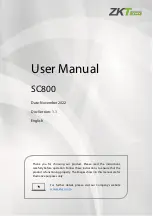
LT8708
24
Rev 0
For more information
V
IN
REGULATION AND SENSING
Two pins, FBIN and VINHIMON, are provided to sense
the V
IN
voltage and issue the appropriate response to the
switching regulator.
V
IN
: Regulation
Subject to the priorities in Table 3, a resistor divider be-
tween V
IN
, FBIN and ground can be used to regulate V
IN
or
serve an undervoltage lockout function. A few application
examples are as follows:
• For V
IN
supplies with high source impedance (i.e., a
solar panel), V
IN
regulation can prevent the supply
voltage from dropping too low under high V
OUT
load
conditions.
• For V
IN
supplies with low source impedance (i.e.,
batteries and voltage supplies), the FBIN pin can be
used to stop switching activity when the V
IN
supply
voltage gets too low for proper system operation.
• V
IN
can also be regulated to a maximum voltage when
power is flowing from V
OUT
to V
IN
, such as in a battery
backup application.
When FBIN falls near or below the EA3 reference (1.205V
typical), the V
C
voltage falls and reduces current draw from
V
IN
. The V
IN
regulation voltage is given by the equation:
V
IN
= 1.205V • 1+
R
FBIN1
R
FBIN2
⎛
⎝
⎜
⎜⎜
⎞
⎠
⎟
⎟⎟
where:
R
FBIN1
and R
FBIN2
are shown in Figure 1.
V
IN
: Above Regulation and Overvoltage
When the FBIN pin and EA3 detect V
IN
is above regulation,
V
C
is allowed to rise. If forward conduction is enabled (CCM,
FDCM, FHCM and Burst Mode operation), then current and
power can flow from V
IN
to V
OUT
. If only reverse conduc-
tion is enabled (RDCM and RHCM), then switching will
stop and current won’t be delivered into V
IN
. NOTE: This
above-regulation condition is required to allow forward
conduction in an application.
A resistor divider between V
IN
, VINHIMON and ground
is used to detect V
IN
overvoltage. This function prevents
reverse conduction, from V
OUT
to V
IN
, from forcing V
IN
higher than desired. When overvoltage is detected by VIN-
HIMON,
RVSOFF
is pulled low to disable reverse current
and power. This function can be used as an OVLO (over
voltage lockout), for example, when a battery, connected
to V
IN
, is being charged from V
OUT
. See the VINHIMON,
VOUTLOMON and
RVSOFF
section for more detailed
information.
V
IN
: Below Regulation
When the FBIN pin and EA3 detect that V
IN
is significantly
below regulation, V
C
may fall to its minimum voltage. The
LT8708 responds to the minimum V
C
voltage according to
the conduction mode enabled by MODE, DIR and
RVSOFF
.
If only forward conduction is allowed (FDCM, FHCM and
Burst Mode operation) then switching will stop and cur-
rent won’t be drawn from V
OUT
. If reverse conduction is
allowed (CCM, RDCM and RHCM), then current and power
will flow from V
OUT
to V
IN
.
UVLO functions are available to detect low V
IN
voltage.
These functions are discussed in the Voltage Lockouts
section.
CURRENT MONITORING AND LIMITING
Monitoring and Limiting: IMON Pins
The LT8708 can monitor V
IN
and V
OUT
current (I
IN
and
I
OUT
) in both the positive and negative directions. The
CSPIN and CSNIN pins connect across a current sense
resistor to monitor I
IN
. External resistors are connected
from the IMON_INP and IMON_INN pins to GND. Their
resulting voltages are linearly proportional to positive
I
IN
and negative I
IN
respectively. See amplifier A3 in the
Block Diagram.
Similarly, an I
OUT
sense resistor, measured by CSPOUT
and CSNOUT, is used to monitor the V
OUT
current. External
resistors are connected from the IMON_OP and IMON_ON
pins to GND. Their resulting voltages are linearly propor-
tional to positive I
OUT
and negative I
OUT
respectively. See
amplifier A1 in the Block Diagram.
OPERATION
















































